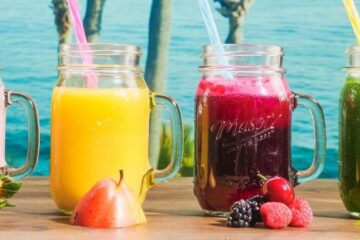Two-thirds of all water bottles purchased in the US are PET bottles. It is said that harmful substances get into to the drink from this type of plastic.
Pesticides, heavy metals and mold – reports about contaminants in food keep consumers unsettled. A some time now a new threat was added to the agenda: PET bottles (PET stands for the plastic polyethylene terephthalate).
We use these bottles to sip water, fruit juices, sodas and other liquids – but what is wrong with them? The problem lies deep within the economical system.
Hormones in PET bottles
Researchers discovered that PET bottles can pose a health risk. For eight weeks they let snails live in glass or PET bottles filled with water. After that the experts counted offspring from brood pouches to see how many they had. It turned out that snails living in PET bottles reproduced more often than those living in glass, which means that hormonal stress was present. The experts concluded substances passed into water through packaging materials.
This is how these substances work?
Chemicals with hormone-like effects on the human body can be quite serious. Possible consequences may include changes in sperm quality (including infertility), enlargement of the prostate, increased occurrence of diabetes or dyslipidemia. The burden arises because PET bottles only appear to be tight and secure; they are actually porous and carbon dioxide escapes from them, allowing undesired substances like endocrine disruptors to dissolve into water containing those chemicals.
What else is contained in PET bottles?
Occasionally on mineral water from PET bottles, a certain off-taste can be detected. A substance called acetaldehyde is usually responsible for this. However the concentrations that could be found in PET bottles are so low as not pose any health risks.
How dangerous are these bottles?
Experts are divided on the matter of PET bottles. It is generally said that consumption does not pose a health risk, since exposure levels are (far) below legal limit values in all cases. Some experts have another opinion and warn about possible long-term consequences that aren’t yet foreseeable. Apart from that, some bottles don’t carry their code (PET bottles feature an invisible triangle with the code 01 at the bottom of the bottle). No one can say for sure how these were produced or what substances they contain. And nobody knows if the legal limit will be adjusted over time.
How to protect yourself
The dangers can easily be ruled out if manufacturers used lightweight glass instead of PET. Lightweight glass bottles weigh just a third of standard glass bottles, but changing over to them is expensive. So we have to decide for ourselves: plastic or not? It’s recommended to use reusable containers with light-weighing materials, especially for environmental reasons!
Here are some tips:
- Do not drink water from unmarked bottles.
- In general, do not place PET bottles in the sun, because heat and UV radiation release even more substances from the plastic.
- Even if the limit values are not increased: If water tastes like plastic, it is better to dispose it.
Another possibility is to filter water yourself. Read on here for more information.




Stay connected
0 Comments